Commemorating a Woman, a Life, a Legacy on the occasion of 1500 Years Since her Passing
Edited by Anna Popper
February 1st is the Feast of St. Brigid, one of the three patron saints of Ireland. The legacy of St. Brigid lies in the heart of Irish history, a figure shrouded in mystique and revered for her compassion, generosity and miraculous powers. She is associated with various aspects of feminine power, including healing, poetry and nurturing. As a patron saint of Ireland, she holds a special place in Irish culture, particularly among women. Tradition holds that she was born in the mid-5th century and died in 524 AD.
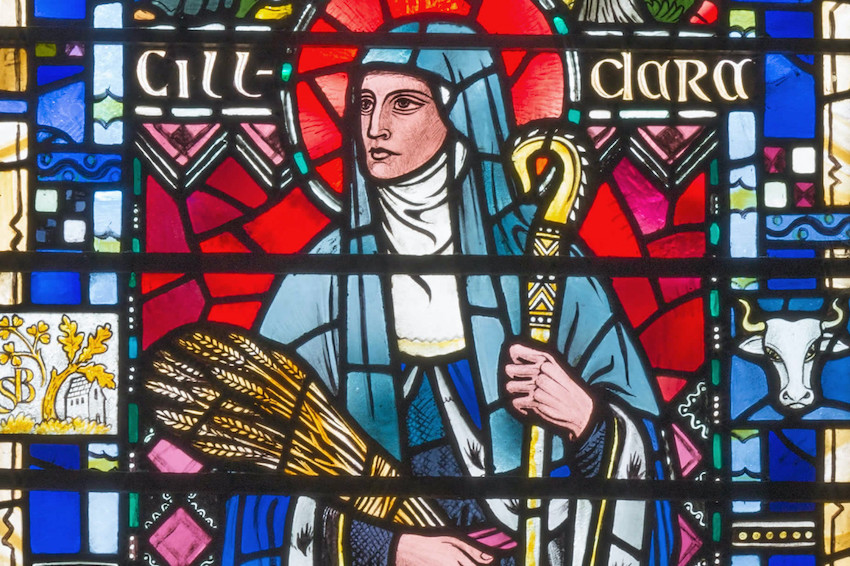
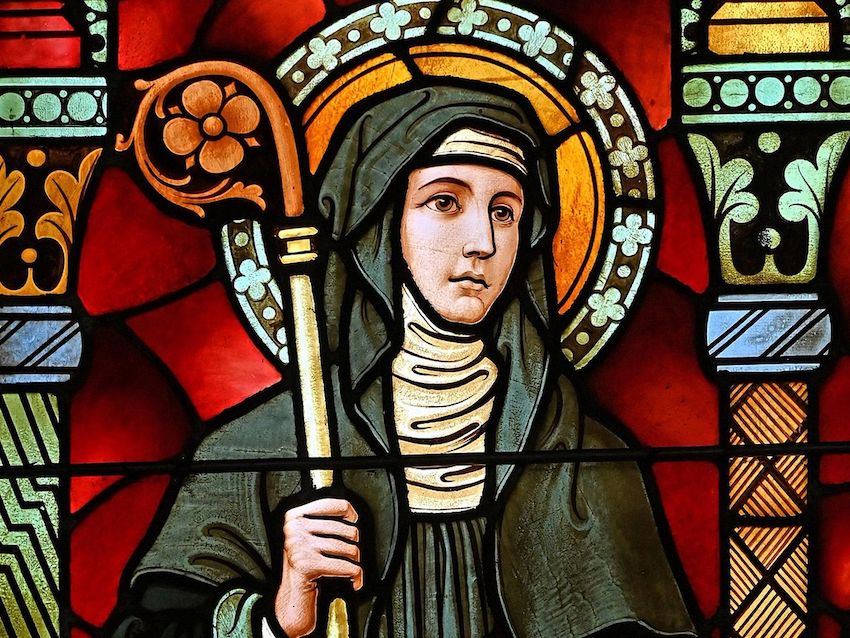
Contemporary St. Brigid’s Day celebrations often focus on recognizing and honouring the talents, contributions and creativity of women. This can take various forms, such as events, showcasing women’s art, music, poetry and literature, as well as acknowledging the achievements of women in various fields. It is a day to pay tribute to the spirit of St. Brigid and celebrate the resilience, ingenuity and creativity of women throughout history and in modern times.
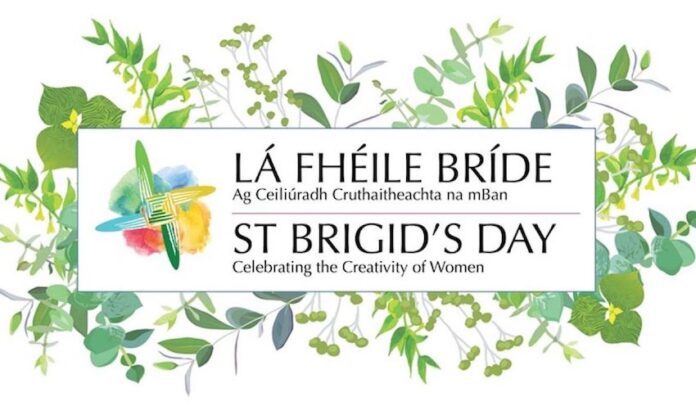
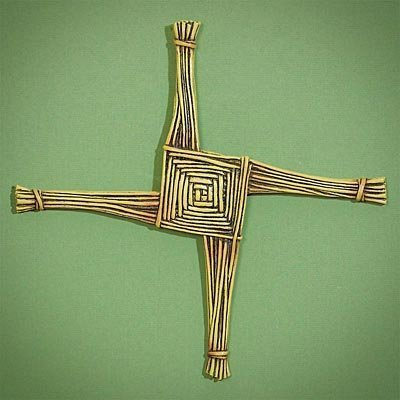
St. Brigid’s Day is celebrated with fervour across Ireland, with each region adding its unique flavour to the festivities. Contemporary celebrations honouring her memory include the traditional St. Brigid’s crosses, as well as community gatherings, parades, music festivals, various rituals and special church services, reflecting both the cultural and religious dimensions of the celebration. St. Brigid’s Crosses are a traditional Irish symbol made from rushes or straw, typically woven into a square or circular shape with four arms extending outward. The cross has both Christian and pagan roots and became a symbol of protecting homes.
St. Brigid’s Day in Budapest
In recent decades, St. Brigid’s Day has evolved into a celebration of the profound impact women have had worldwide. Ireland’s embassies have taken the opportunity to pay tribute to remarkable women in a range of spheres.

To mark the 1500th anniversary of St. Brigid’s death on 1 February 524, the Embassy of Ireland in Budapest hosted a special evening dedicated to the life and legacy of an extraordinary Hungarian woman, a legendary film actress and humanitarian: Katalin Karády (1910-1990).
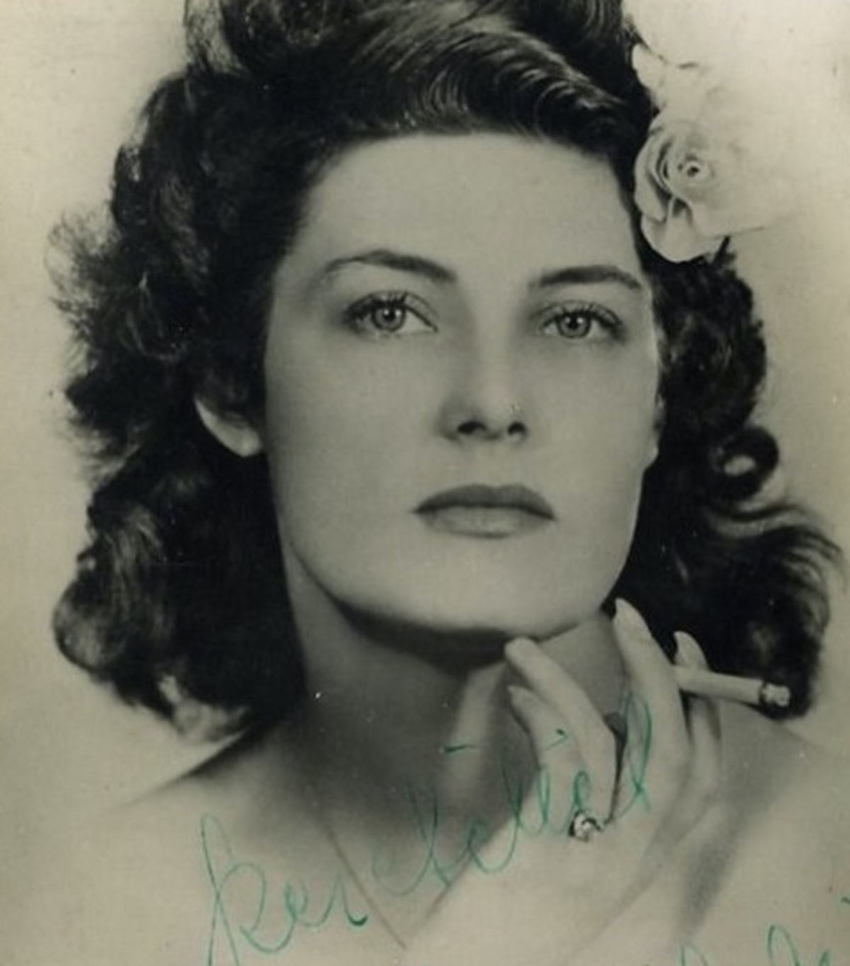
An icon of screen and stage, Karády risked her life during World War II to save Jewish families by the banks of the Danube. During those years she lived in the villa at Lepke utca, in the 2nd district in Buda, which has been the Residence of the Irish Ambassadors to Hungary over the last two decades.
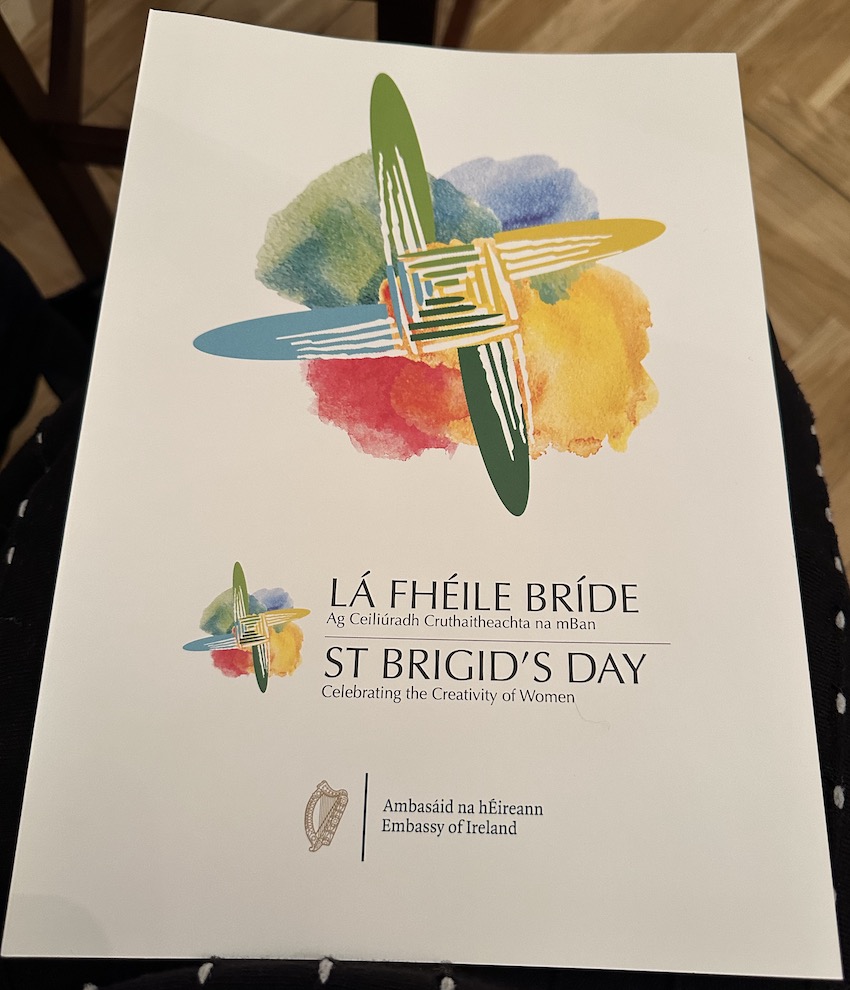
To delve into Karády’s enduring influence, the celebration of St. Brigid’s Day in the Ambassador’s Residence (the former Karády villa that served as her final home before departing Hungary forever in 1951) was attended by two acclaimed Hungarian writers with ties to Ireland: Zsófia Bán and Csilla Toldy, both of whom have translated Karády’s remarkable life into literature. Through readings from their works and engaging conversations, Zsófia and Csilla explored what made Karády such a captivating figure, both as an artist and as a person. They also discussed the intricate challenge of portraying such a multifaceted character in new literary endeavours, in a setting decorated with Karády memorabilia for the special occasion.
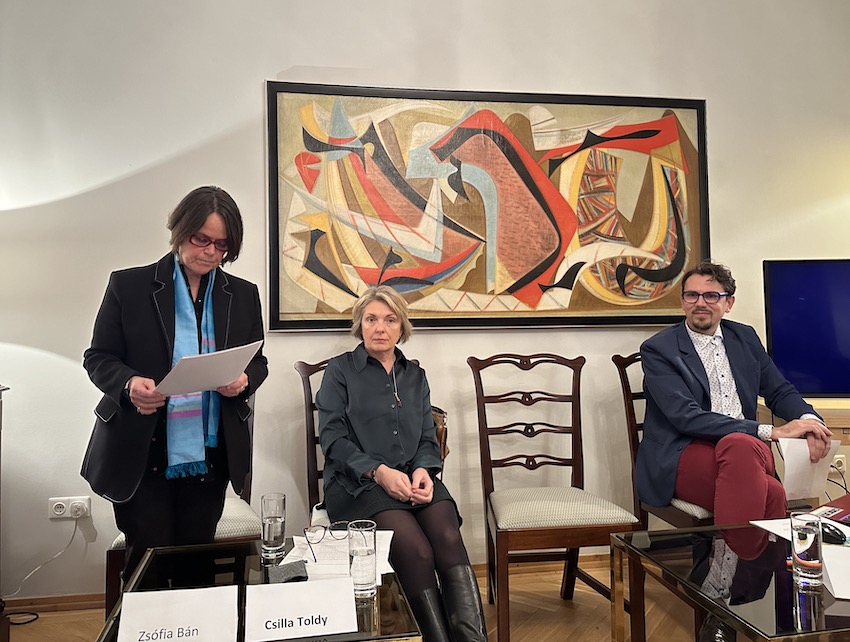
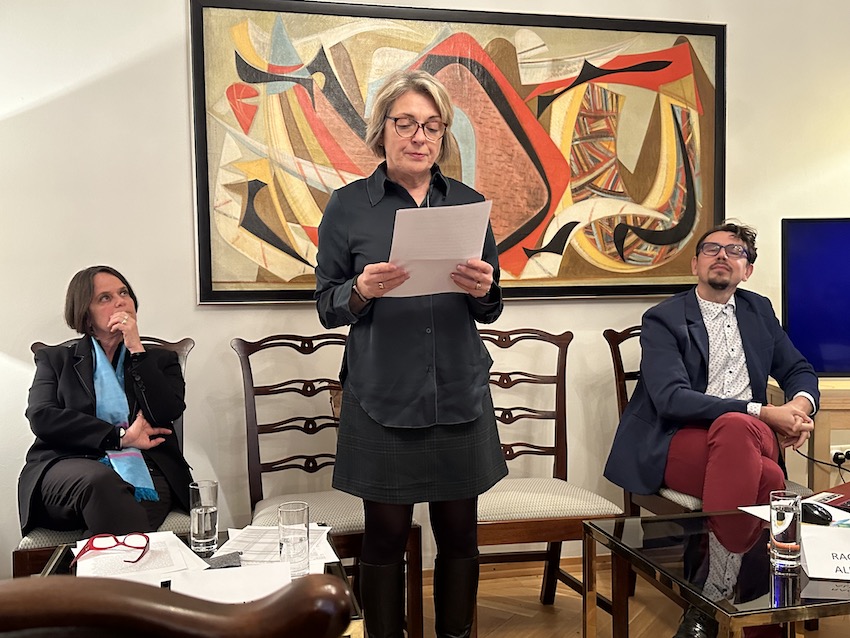
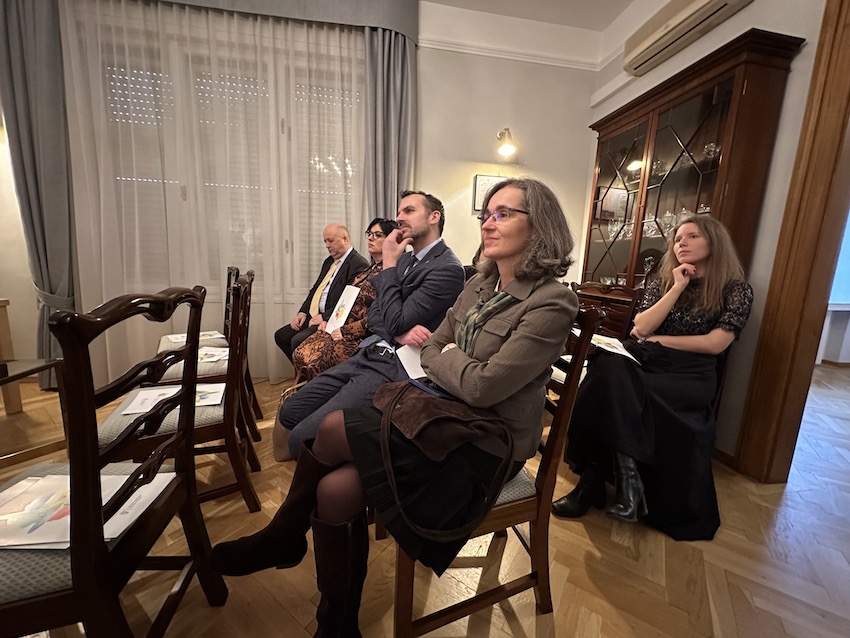
The event commenced with a rendition of one of the renowned Karády film chansons by Hungarian singer Réka Gács, which echoed the themes of destiny prevalent in most of her film works.
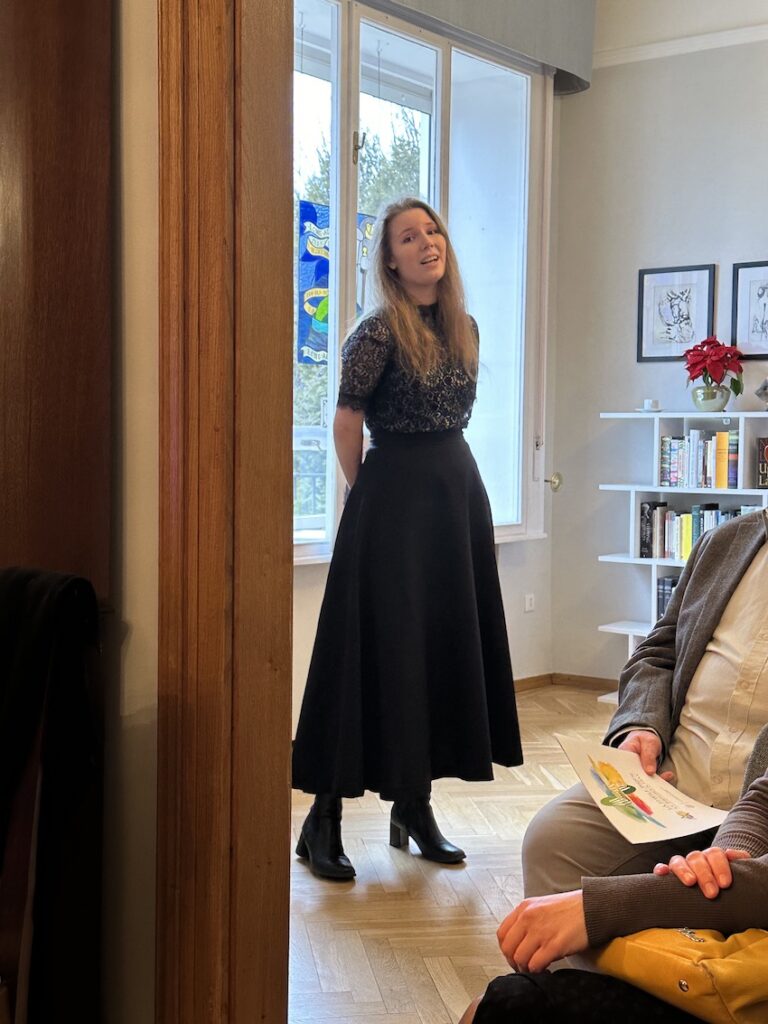
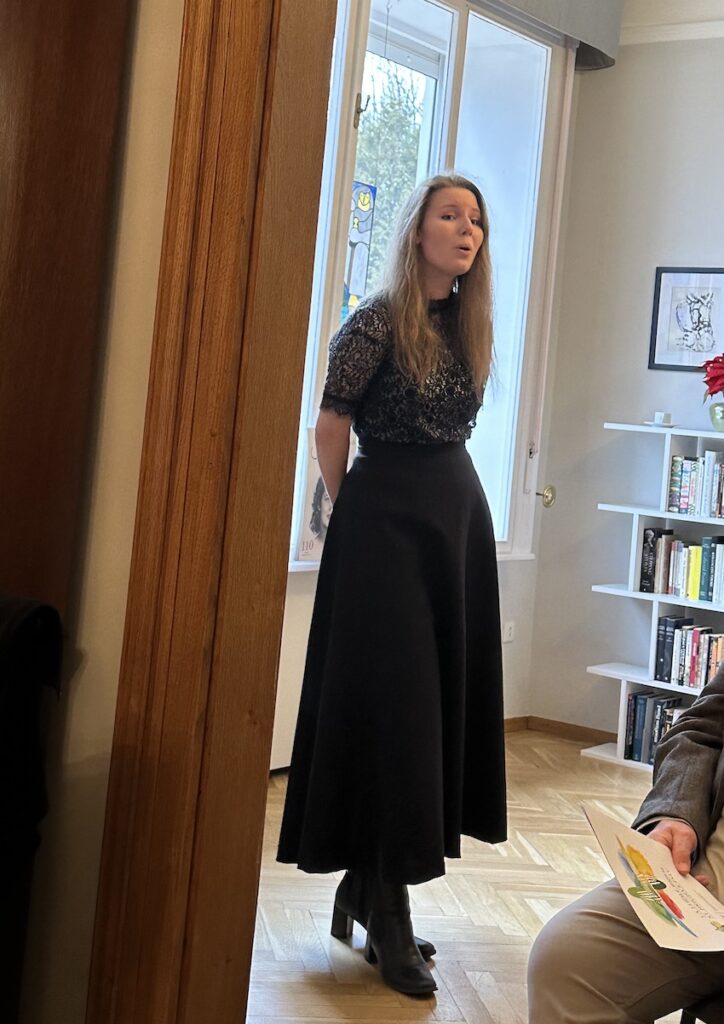
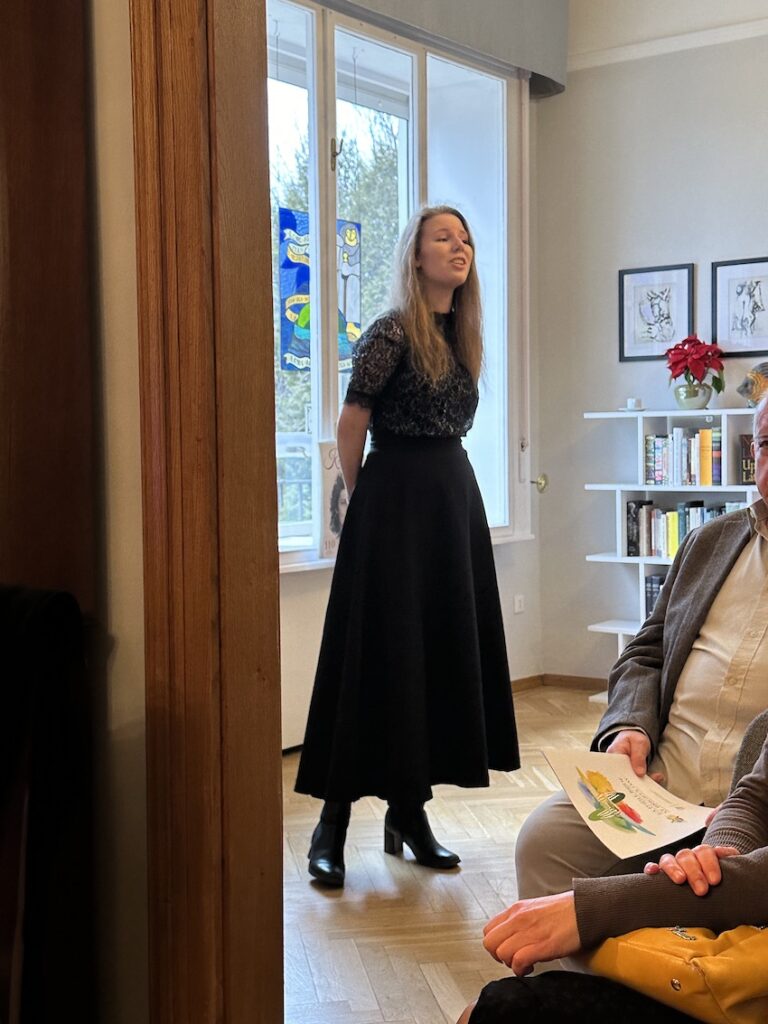
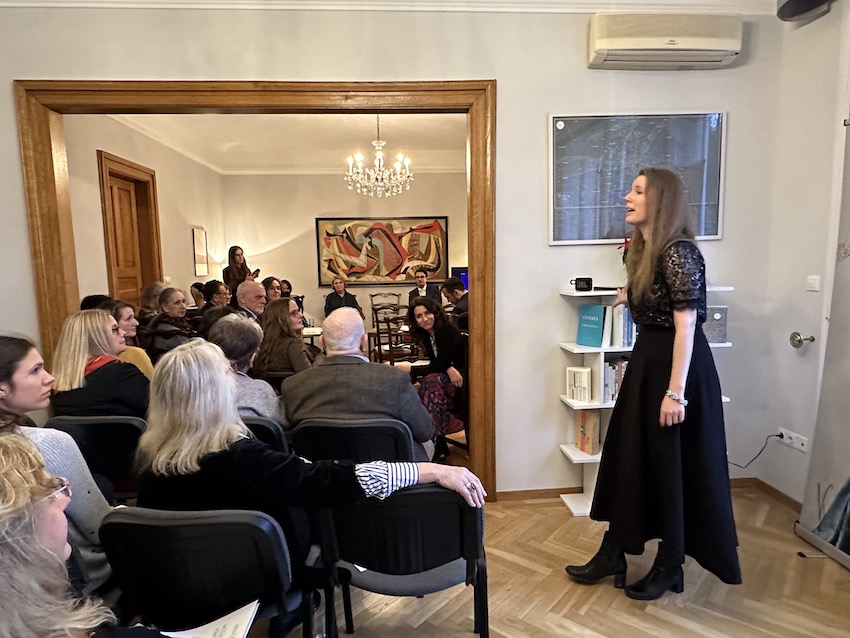
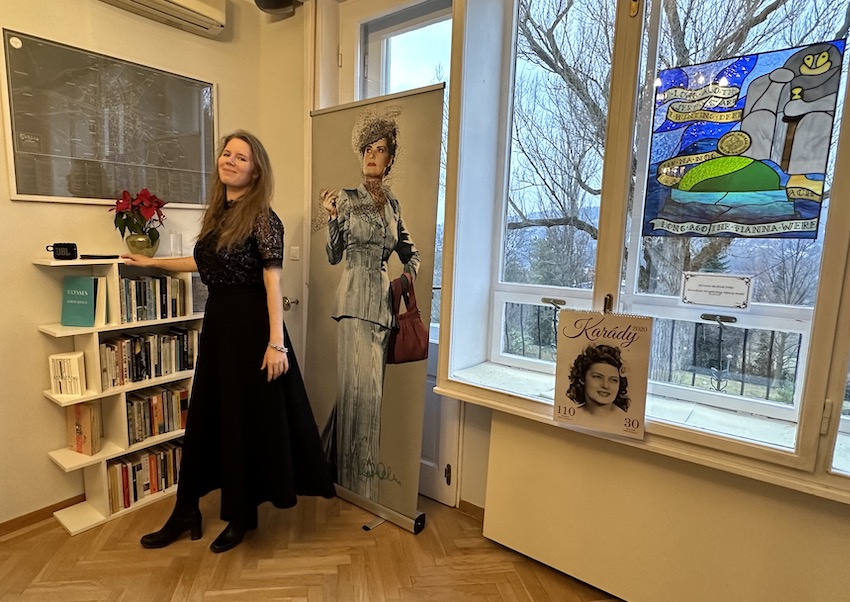
This was followed by a warm welcome to the audience from various walks of life, by H.E. Ragnar Almqvist, Ambassador of Ireland, and his speech:
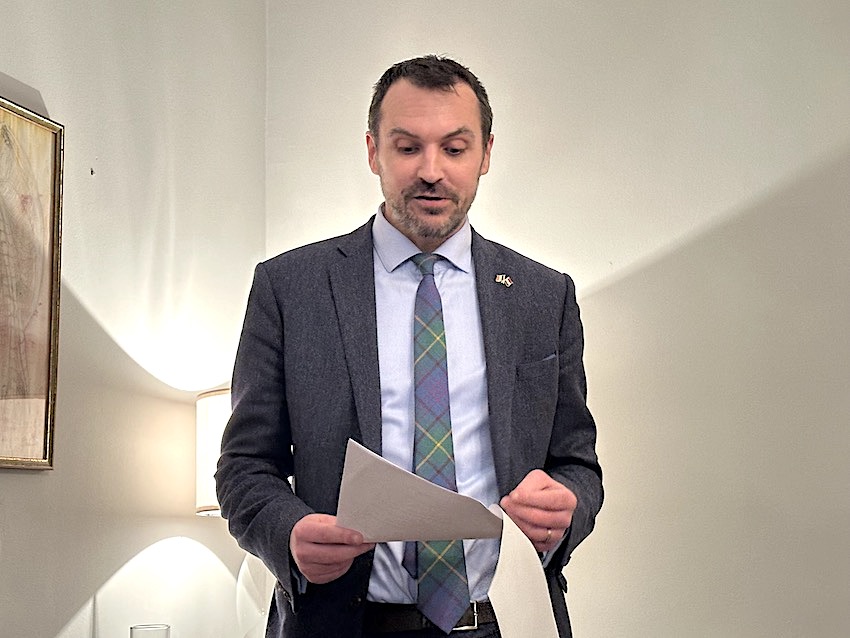
“As Ireland’s Ambassador, I’m fond of reminding people that the Danube Basin was the home of the Celts before the Magyars ever set foot here. Indeed, the great Danube river owes its name to a Celtic goddess – Danu. February 1st marks a special day in the Celtic calendar. In Ireland, it represents the beginning of Spring. Folklore has it that St. Brigid promised: ‘‘Every second day fine, From my day onward, And half of my own day’’.
Well, a little spring sunshine might not mean much in Hungary. But in Ireland, any season where half the days are fine seems to be a real miracle. The significance of the shifting seasons – the promise of new light after winter dark – is also very real. Reflected in the image of the sacred flame that St. Brigid lit in her native Kildare fifteen hundred years ago.
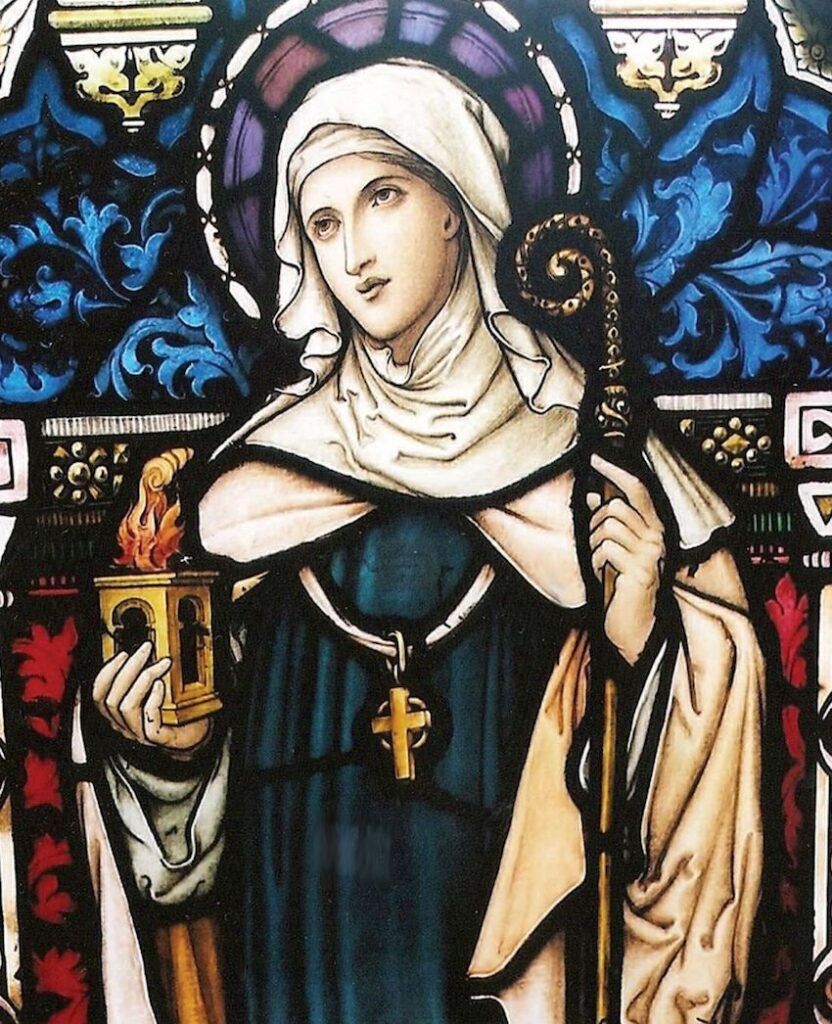
Along with St. Columcille and St. Patrick, St. Brigid is one of Ireland’s three national saints. But her day long precedes Christianity. It has its roots in the Celtic Festival of Imbolc, and has been celebrated on our island for millennia. Brigid was a prolific saint – Irish women are famous multitaskers. Matron of, among others, healers, blacksmiths, livestock and poets. In proto-Gaelic her name translates as “the exalted one”. And her festival has increasingly become an exaltation of women. A millennium and a half after Brigid’s death in 524 AD, communities across Ireland gather today for a nationwide festival. While abroad, from Budapest to Boston, from Sydney to Santiago, our embassies and consulates – now more than half of them led by women – host events to celebrate the remarkable contributions that Irish women have made and continue to make around the world.
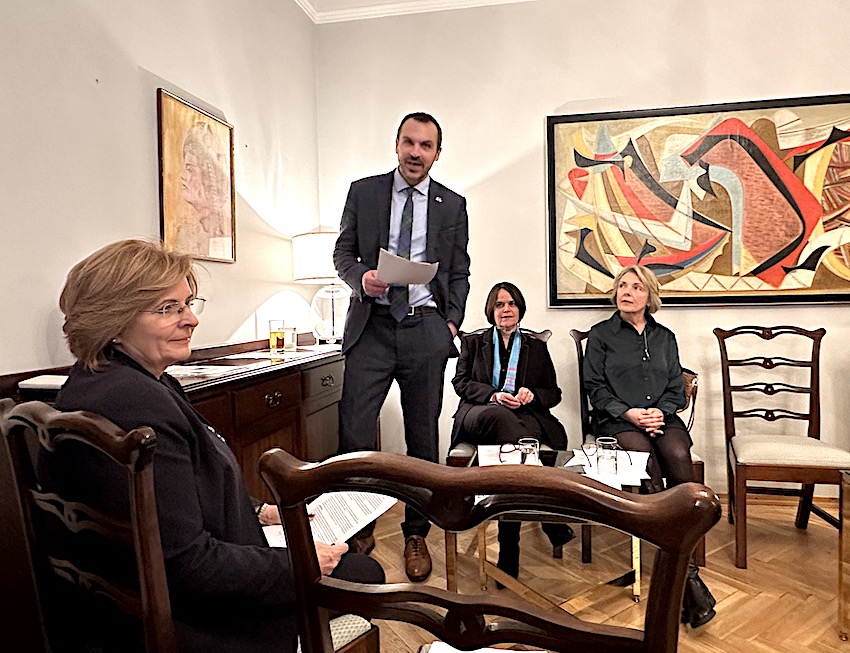
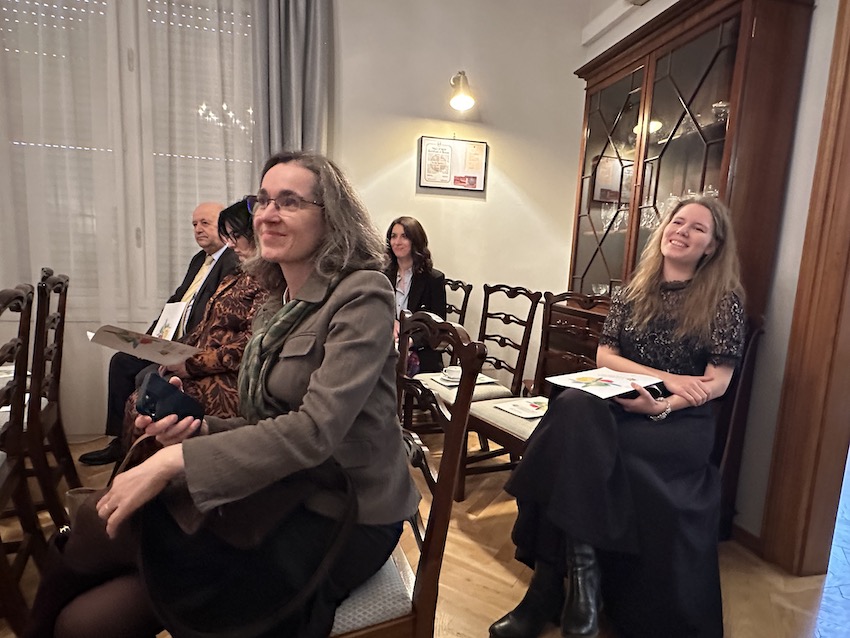
This afternoon’s program is such a celebration. Not of an Irish woman. But of a remarkable Magyar. An actress who was once the most iconic figure in Hungarian film: Katalin Karády. The best known voice on Budapest radio. A woman who lived in this very villa eight decades ago. A humanitarian who, suspected of being an allied spy, was detained and beaten by the Nazis in 1944. But who still risked her life to save Jewish families from the Arrow Cross by the banks of the Danube.
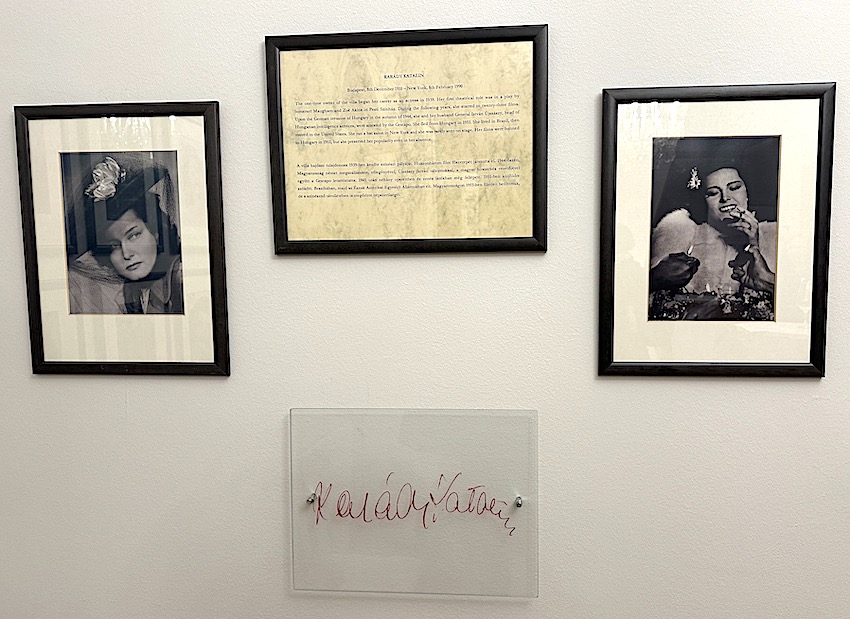
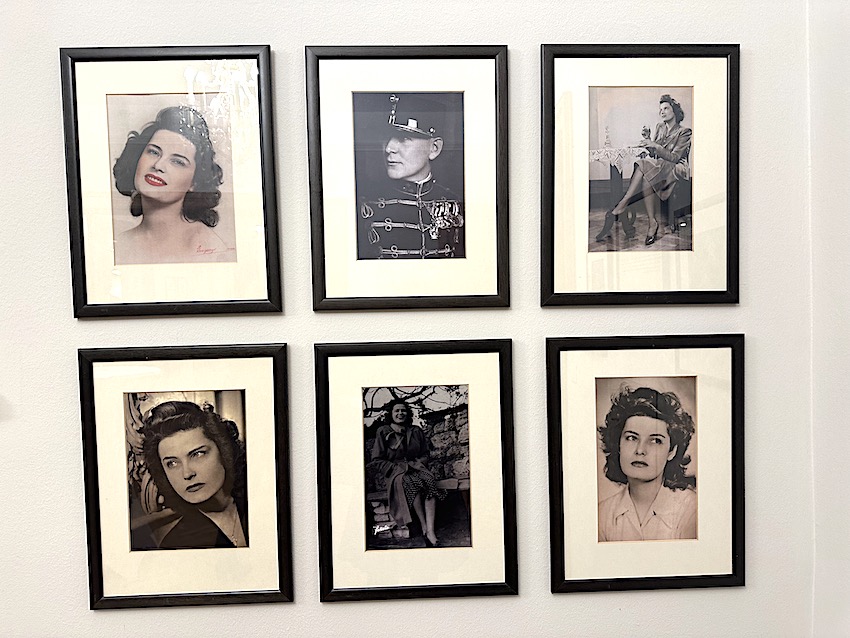
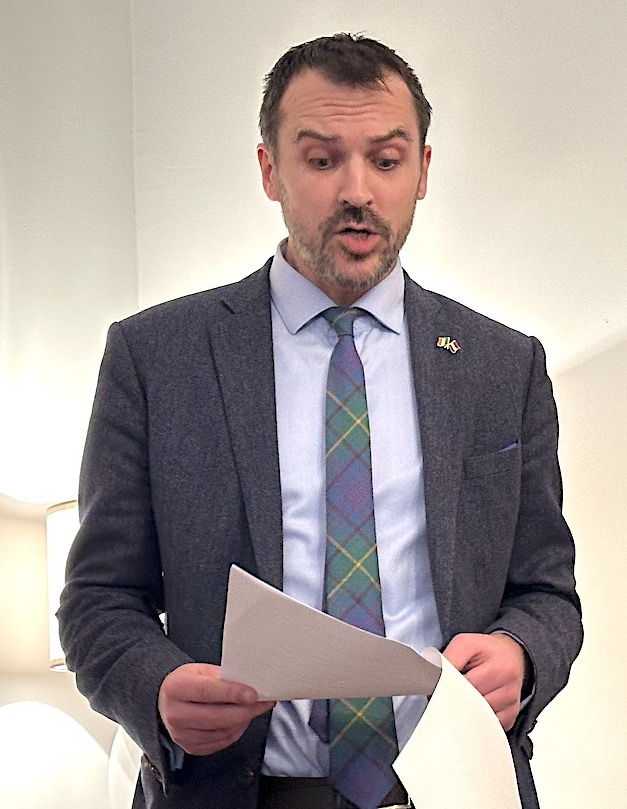
Ostracized by the Communists, she was forced to flee Hungary – first to Salzburg, then to Switzerland, onto Brussels, then to Brazil, where she lived for fifteen years. And finally, after securing a visa through the interventions of Ted and Bobby Kennedy, to New York. She owned a hat store there. But she died 34 years ago, on 8 February, in relative penury. Just as her native Hungary was preparing to hold its first free elections since her exile in 1990.
Posthumously, Katalin Karády was formally recognised as Righteous Amongst the Nations by the State of Israel, an honour for rescuing a number of Hungarian Jews – a copy of that certificate hangs on our wall here. And she was once again revered as a great artist. Yet her story remains perhaps less known in Hungary than it should be. Our three guests are doing a lot to remedy the situation today.
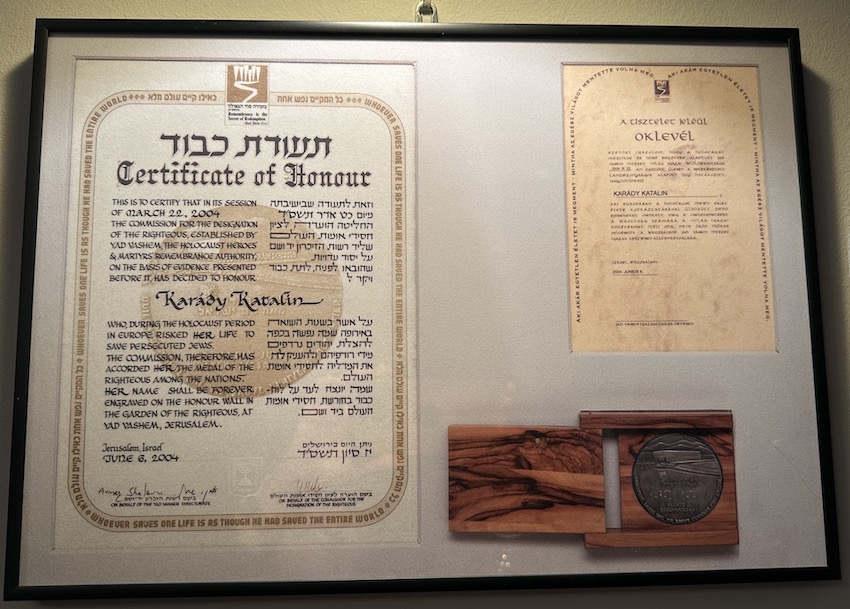
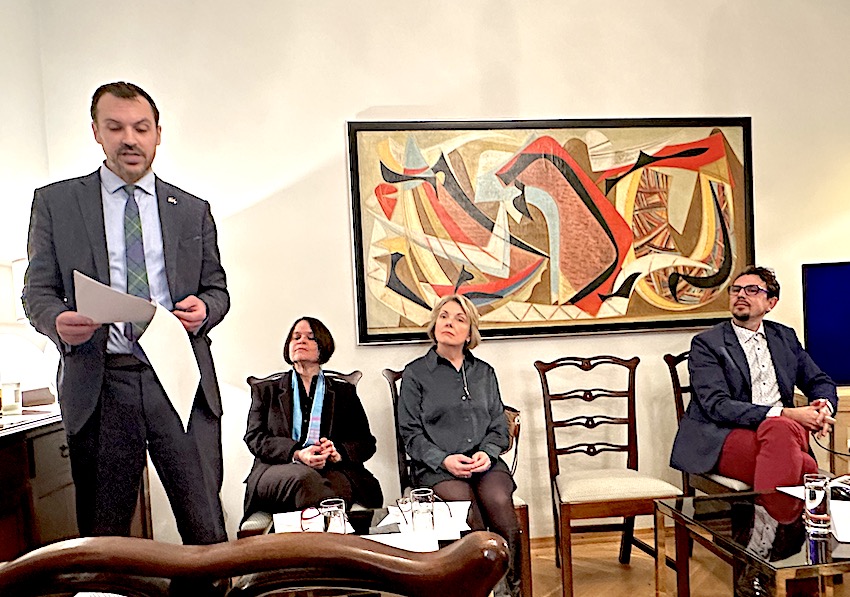
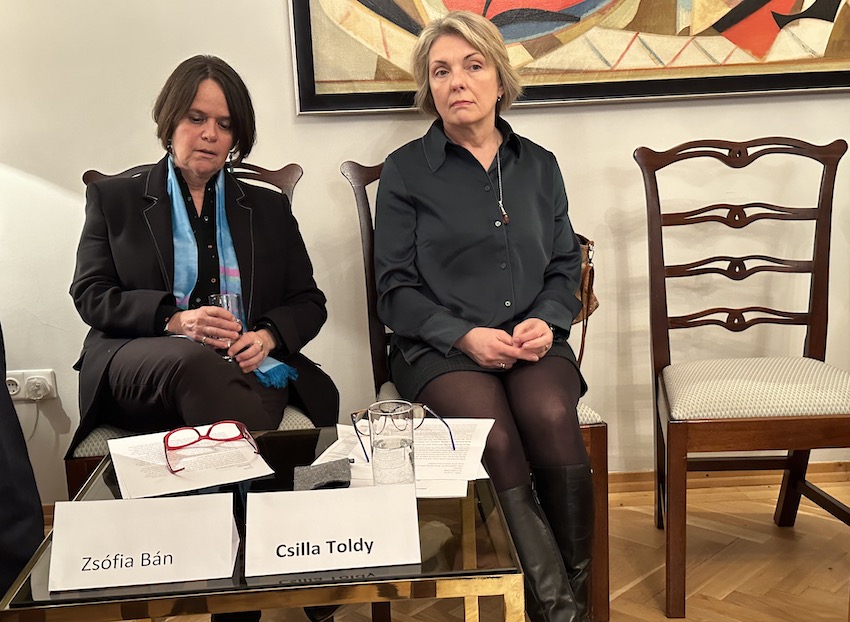
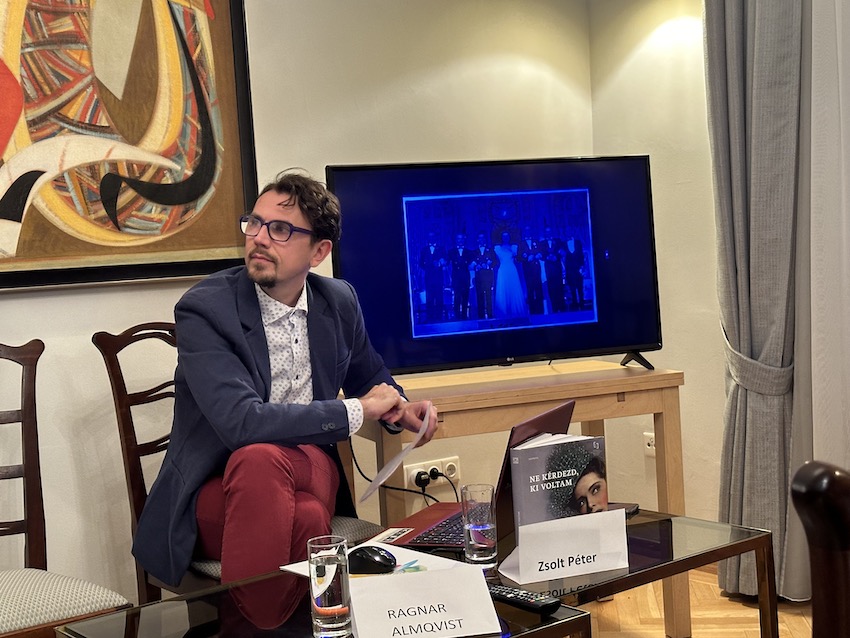
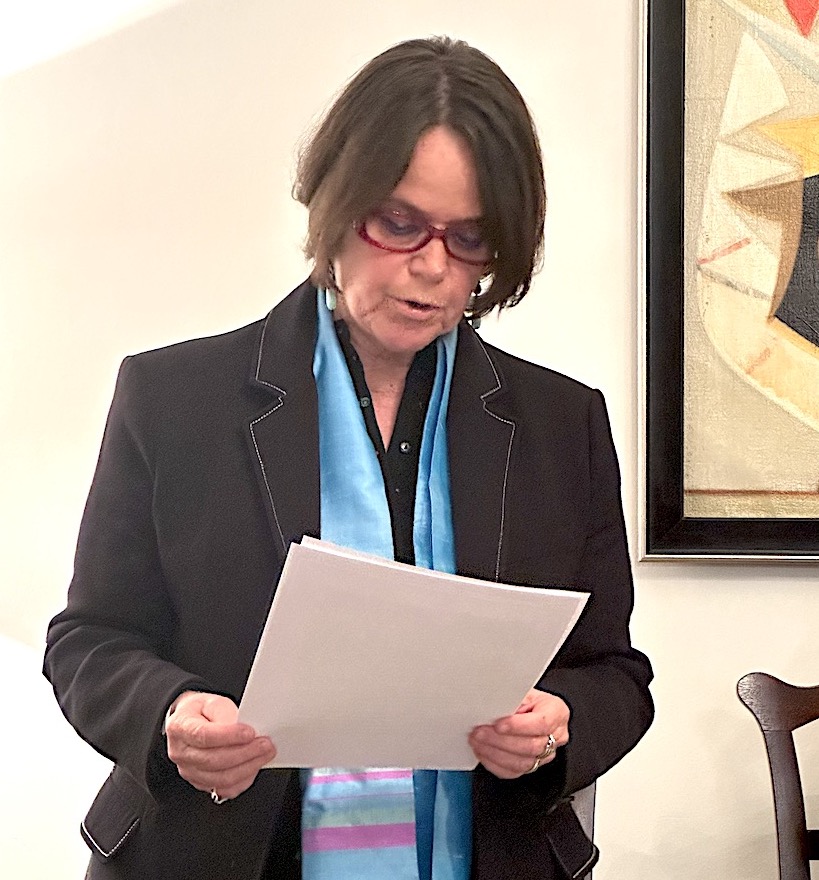
Zsófia Bán was born in Rio de Janeiro and grew up in Brazil and Hungary. A background that has shaped her work as an award-winning writer and scholar. And on which she drew in writing ‘Venom’, a stunning story about the troubling life of Hungarian diva and film star Katalin Karády in exile in Sao Paulo. As a writer and former professor at Eötvös Lóránd University (ELTE), Zsófia has long been a great friend of Irish literature.
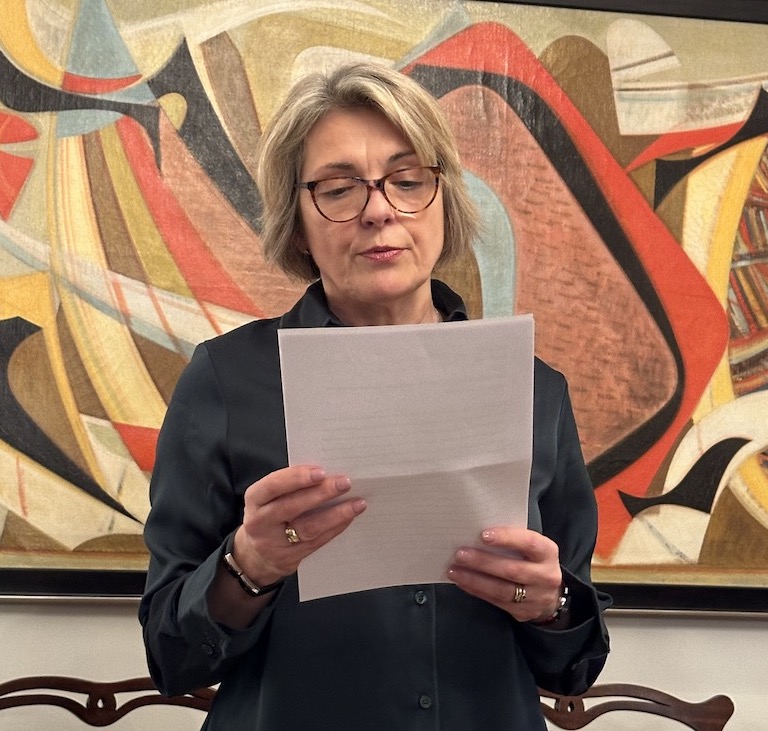
Next to her is another talented Hungarian author, Csilla Toldy, who has lived in Northern Ireland since the late 1990s. And who we claim happily as an Irish and European writer, as well as a Hungarian one. Csilla – who is indeed a star – reads from Kata, her new biographical novel, published this year by Open Books Hungary.
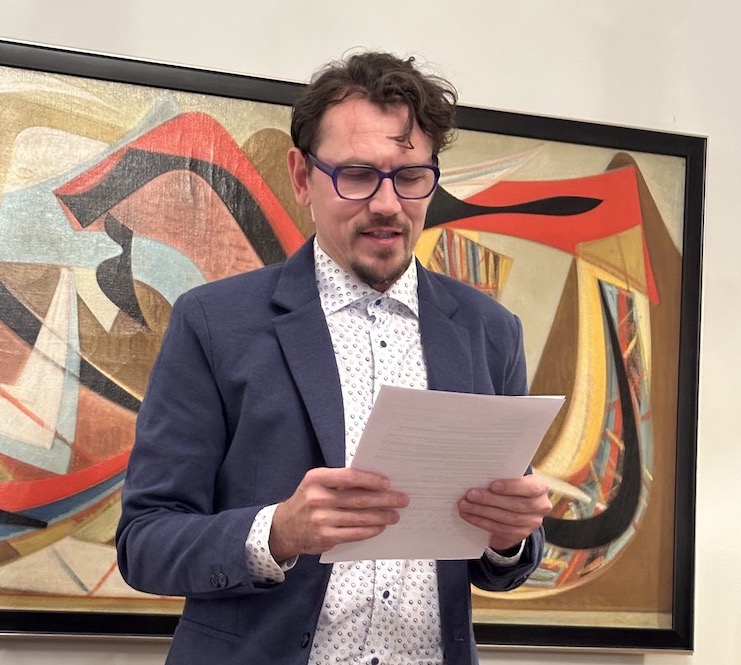
Joining them is Zsolt Péter, theatre historian at the Hungarian Theatre Museum and Institute. An expert on Hungarian film between the two World Wars, he has written extensively about Karády, most recently in the book ‘Ne kérdezd, ki voltam!’ (‘Do not ask who I was.’) and has curated an exhibition on her life and work. He very generously brought some of these materials with him today. Köszönöm – Thank you Zsolt.
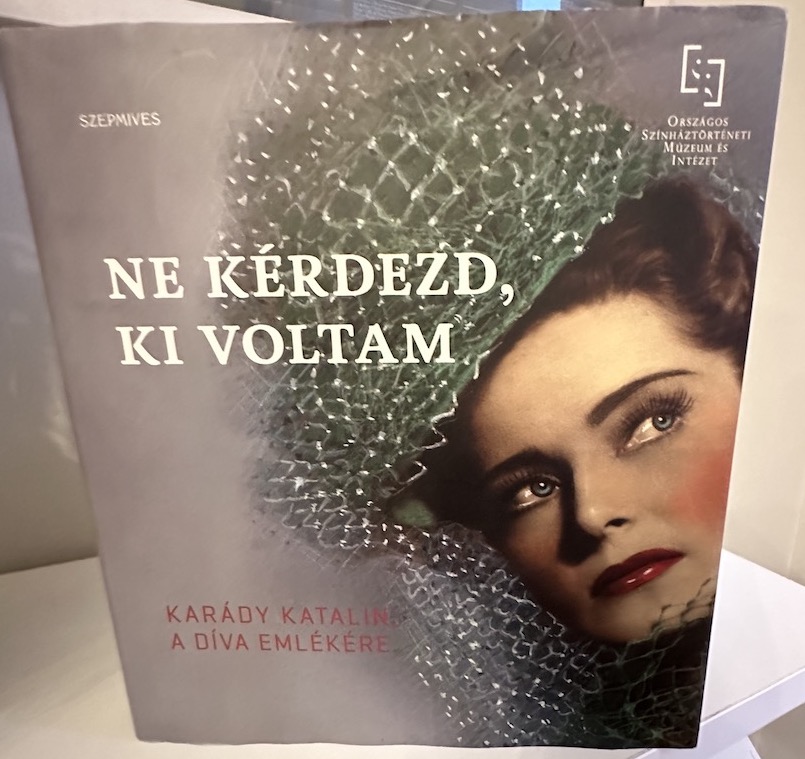
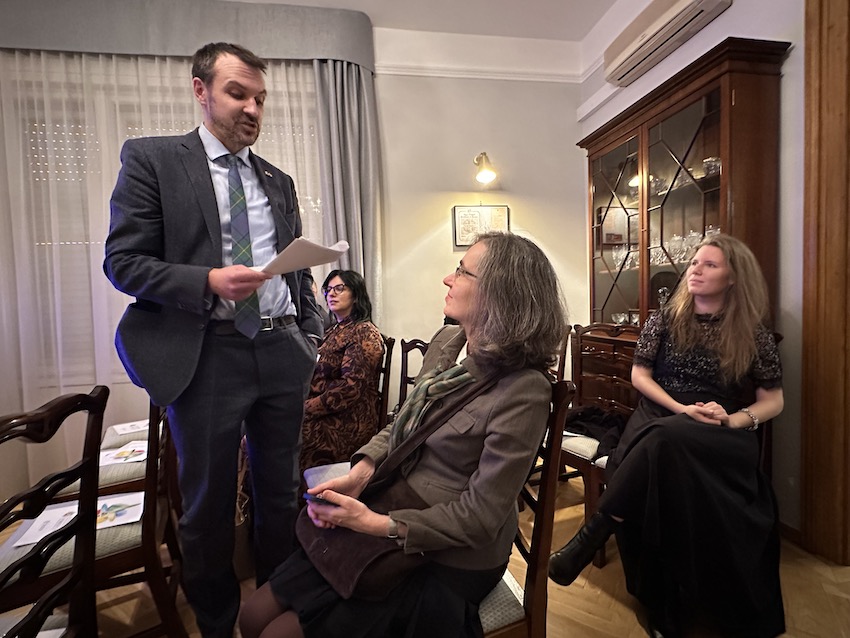
And on that note, it being Brigid’s Day, I want to recognise Marianna and the other brilliant women in our small team – Nargiza, Gabi, Timi, and Zsuzsa – without whom the Embassy wouldn’t function. And the brilliant Irish women in my own life – my wife, Ailbhe – without whom I wouldn’t function. Our daughters, Freja and Sadhbh. And my mother, Éilis, visiting us this week, a writer herself, and a lifelong activist for equality in Ireland.
Remembering the remarkable and heroic Katalin Karády. And wishing all the women of Ireland, wherever they may be, a brilliant Brigid’s Day. Egészségedre, Cheers, Sláinte!”
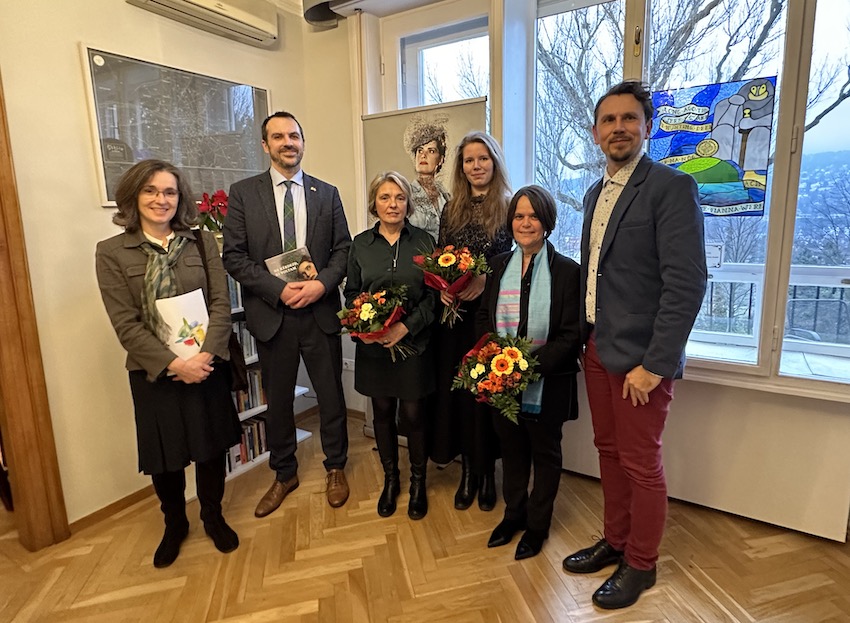
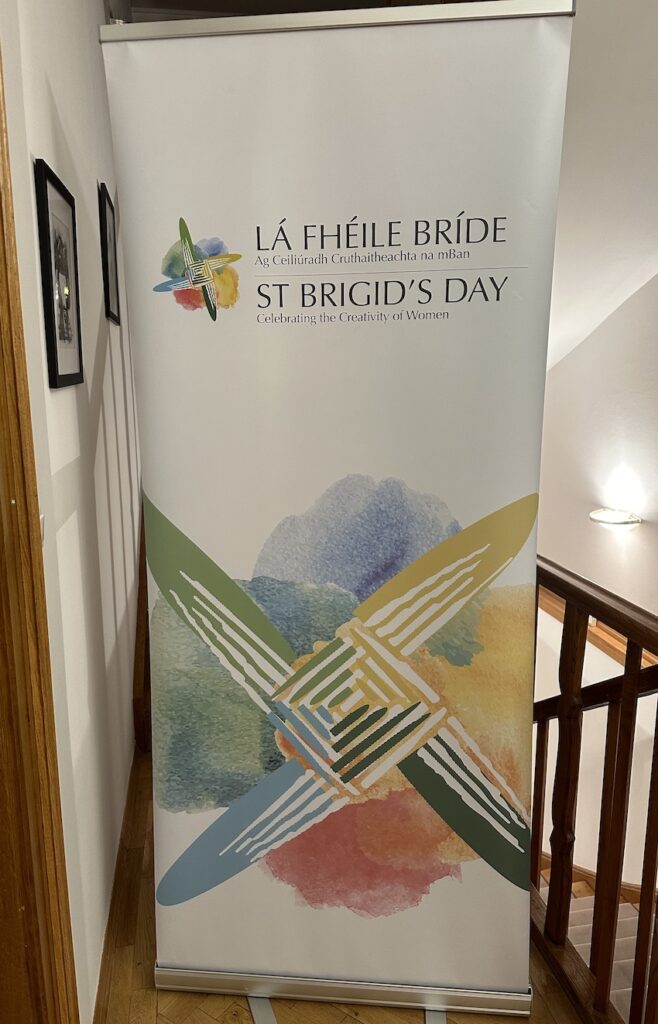
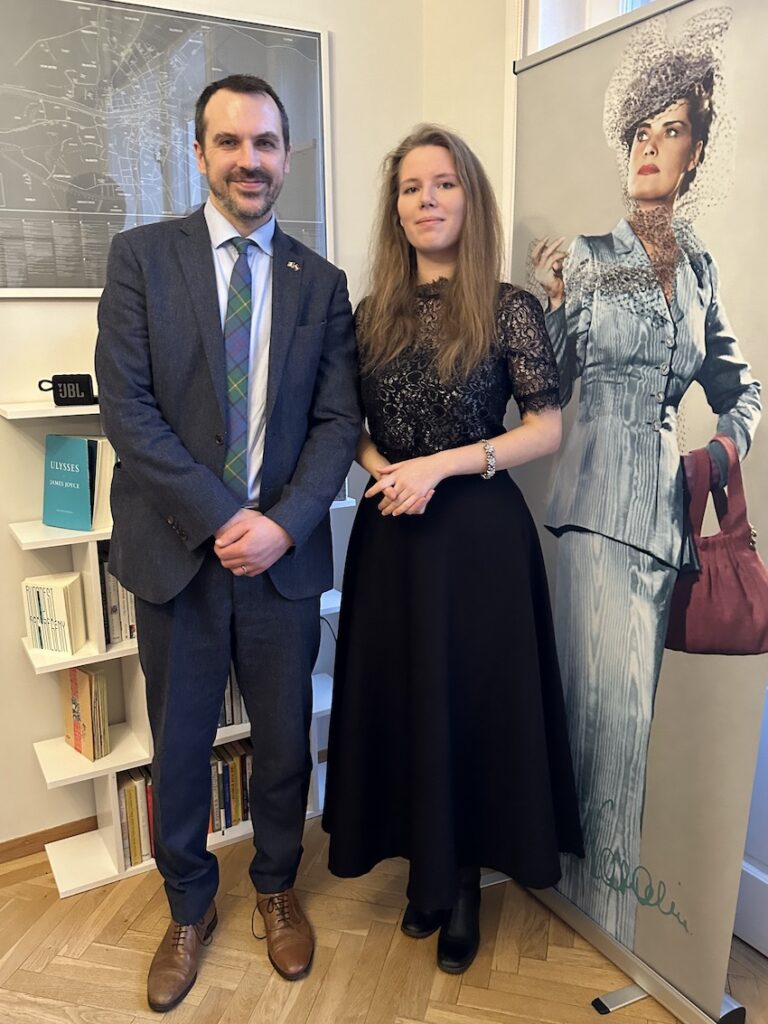
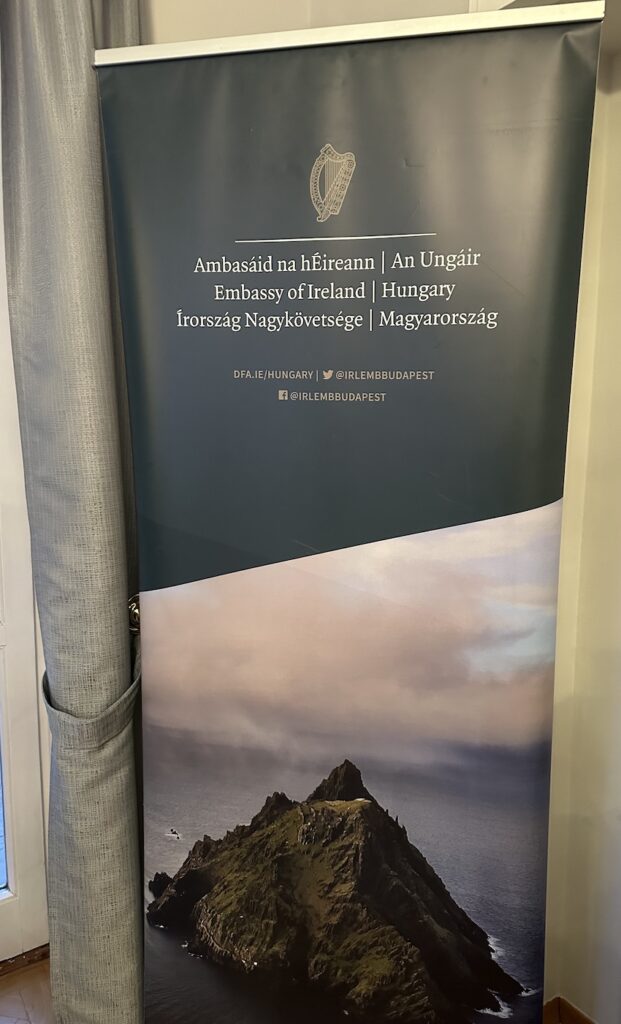
From the Karády Villa in Budapest – to New York:
Since 2003, the Embassy of Ireland in Budapest has the privilege of using the famous Karády Villa as the ambassador’s residence in Buda. So far, seven Irish Ambassadors and their families have lived in this magnificent building during their posting.
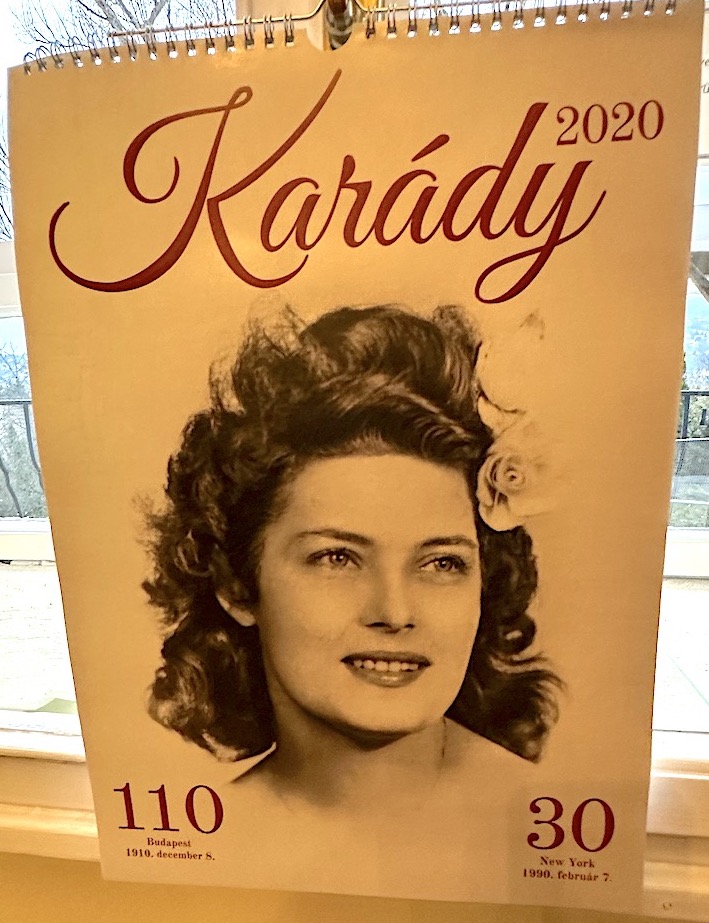
Katalin Karády initially rented this villa and in 1947 she purchased the building. She lived there with Irma Frank until 1951, when they left the country on 19th February, first to Austria-Salzburg, then to Switzerland and afterwards they took refuge in Brazil in Sao Paulo for 15 years. It was not until 1968 that she received a visa to enter the USA, where she ultimately lived until her death on 8th February 1990. The first Hungarian movie star in the Hollywood sense lived and worked as a hat maker in New York, together with Ilona Mohácsi and Irma Frank in Manhattan, on 57th Avenue, refusing to appear in the media.
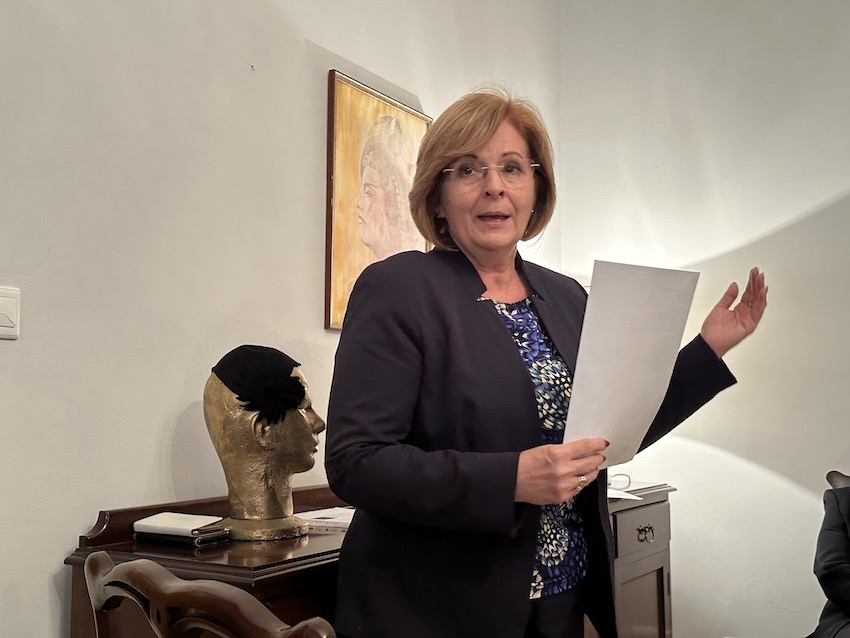
The St Brigid’s Day event continued with an impressive discussion of the three writers, moderated by the Embassy’s Cultural Attaché, Marianna Szegedi Joó, talking about the career and legacy of Katalin Karády, painting a beautiful and emotionally charged portrait of this very sensitive woman. Telling the story where Katalin Kanczler came from and how Zoltán Egyed, a journalist, discovered her in 1938. Over the next six years she starred in 22 Hungarian Hollywood-style films. With her extraordinary talent, charisma and passion, she captivated the audience and became an admired idol. Her deep, decadent voice, modern appearance and habits defied the ideals of her time. Her melancholic film songs resonated with the themes of fate and destiny, offering a reflection during wartime, one of humanity’s darkest chapters.
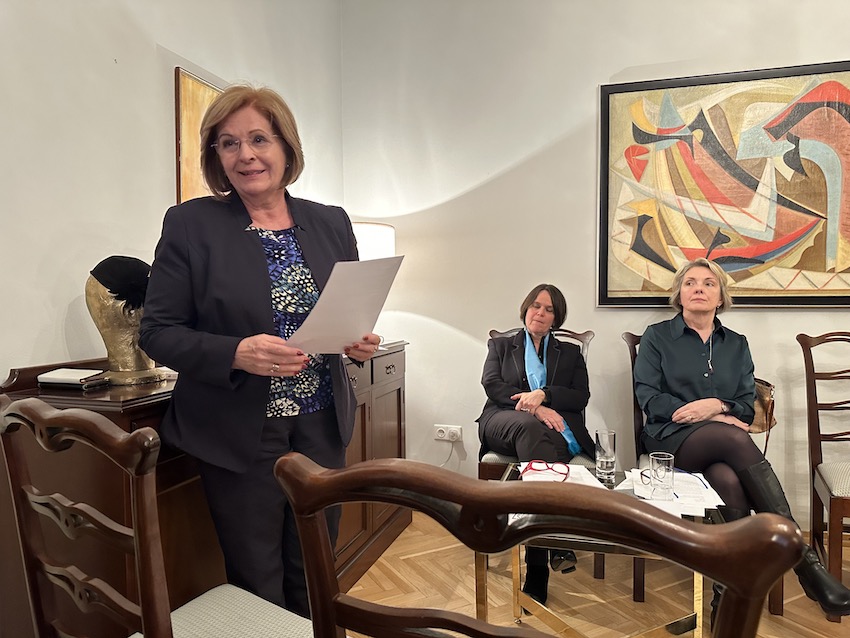
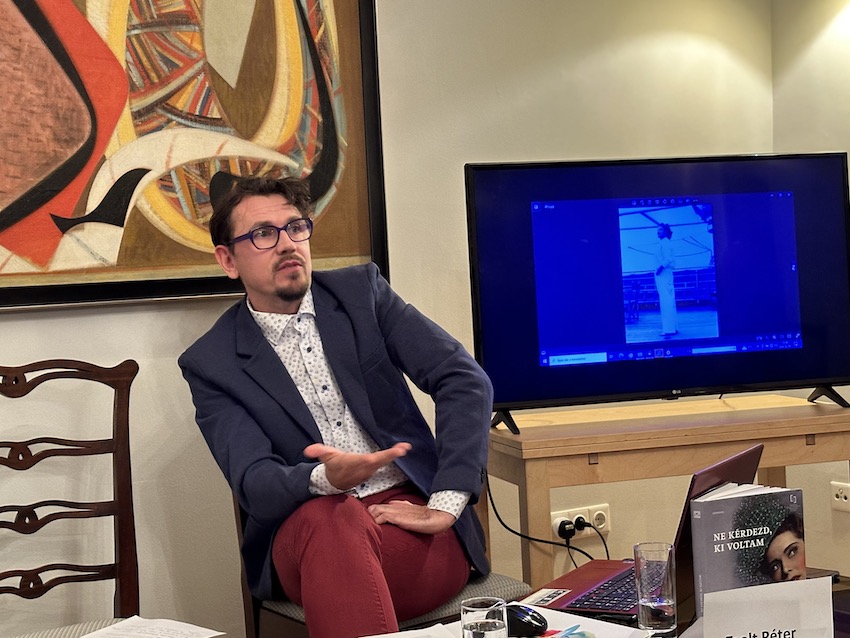
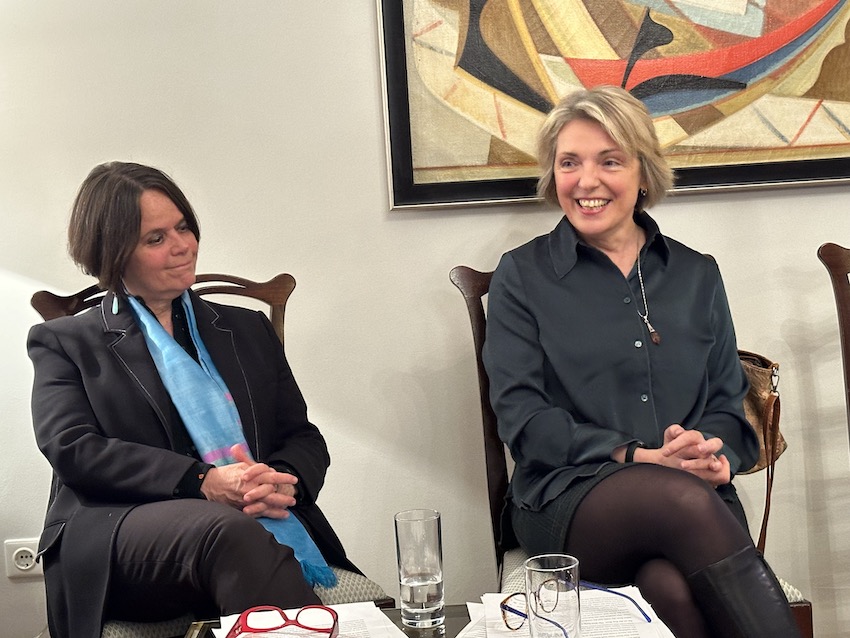
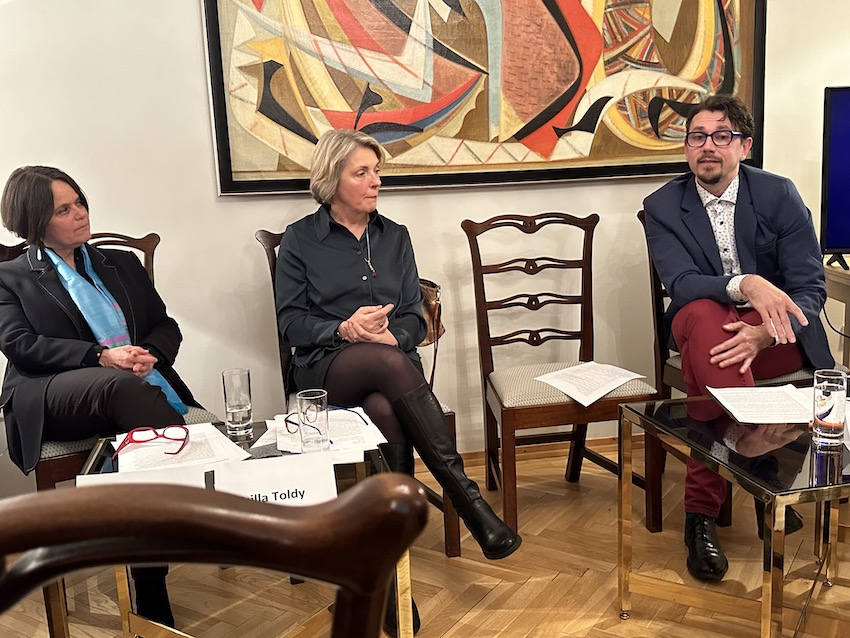
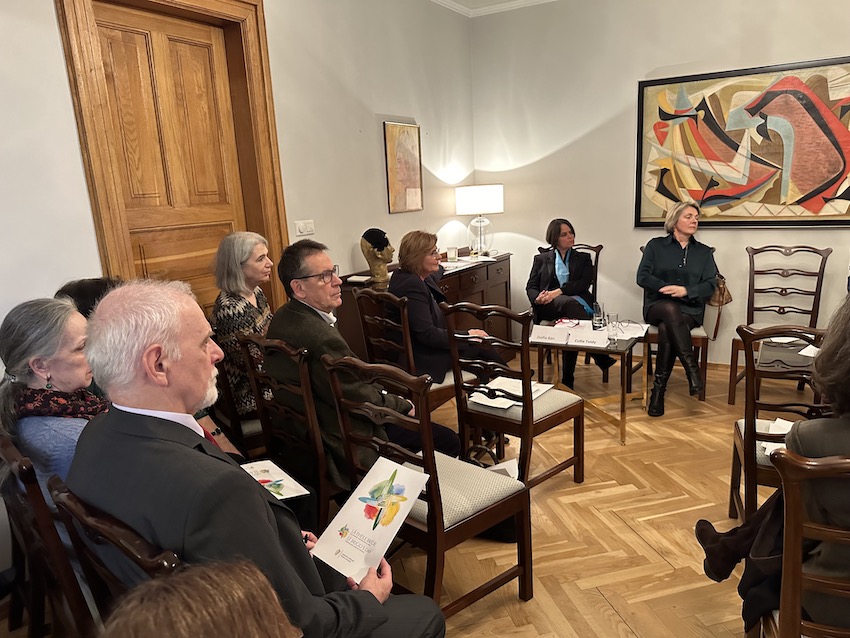
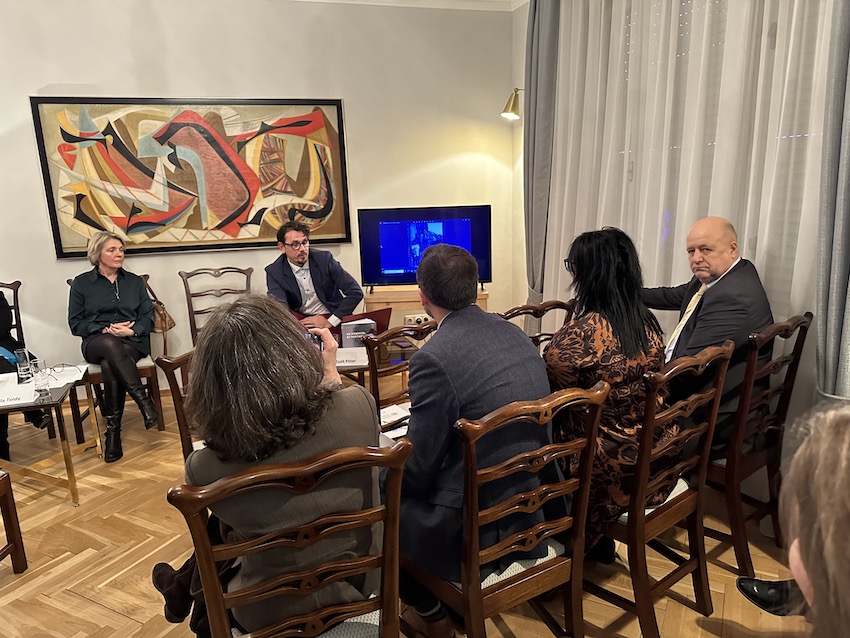
A true humanist with a compassionate heart, she reached out to help persecuted Jewish families and many children, offering them refuge and care in her own homes, saving their lives. She faced adversity with empathy and courage, providing a beacon of hope for those in desperate need, amidst the chaos and terror. It happened that the Arrow Cross (Hungarian fascist organisation in World War II) drove Jewish children to the Danube bank, while Karády gave the Arrow Cross members a handful of gold jewellery so that they wouldn’t kill the children.
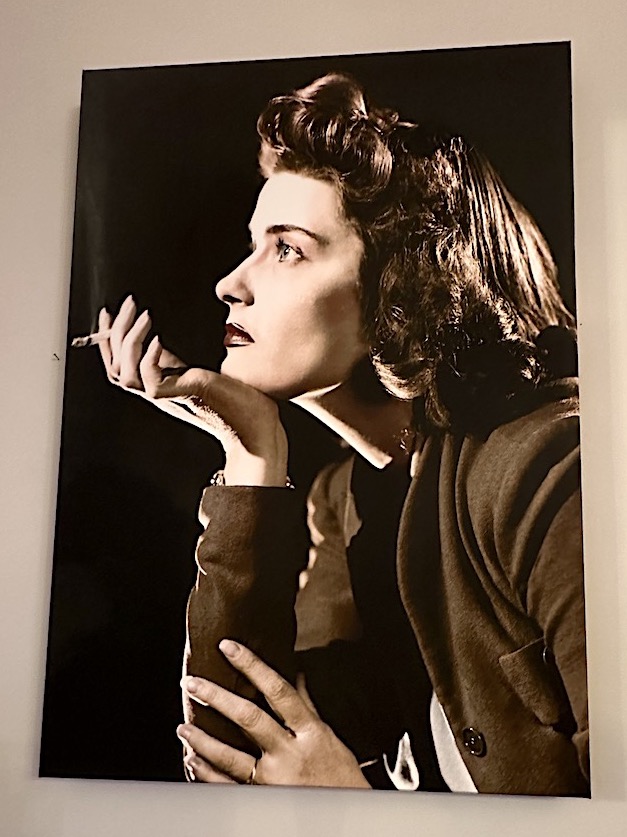
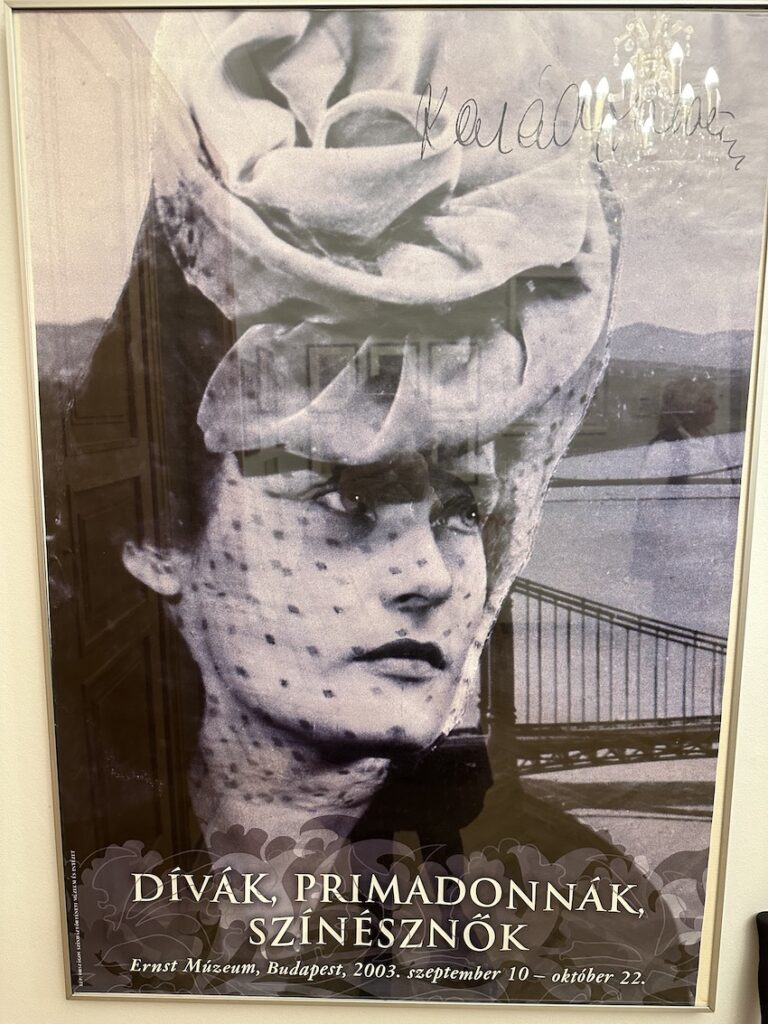
She carried the burden of losing the only true love of her life, a wound that never healed. Forced to emigrate, she spent half of her life abroad. After her death in New York, her body returned to Hungary and found its final resting place in Budapest.
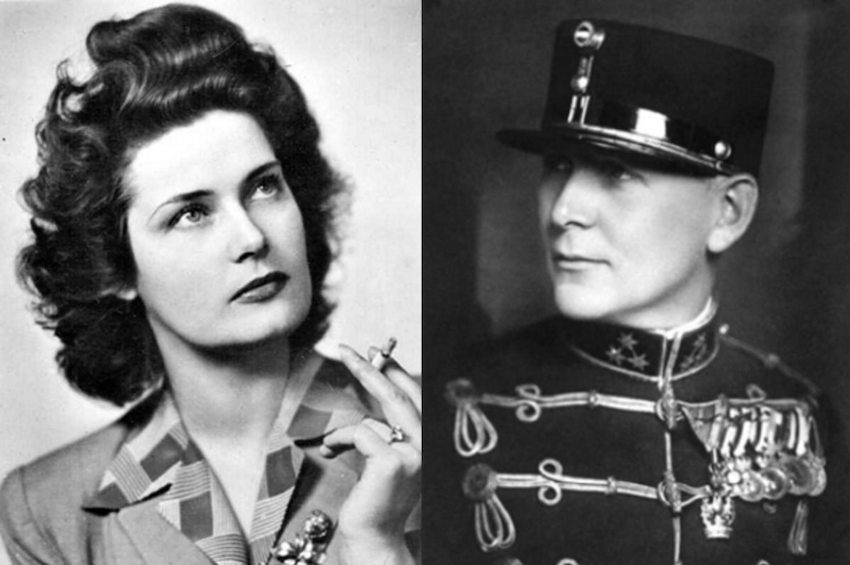
Karády’s personality and her legend were so powerful that even after the lost war, they continue to live on in memory, enduring for posterity. The TV channels continuously keep Karády’s films on their schedules.
St. Brigid’s Day concluded with another timeless Karády classic, beautifully performed by vocalist Réka Gács,
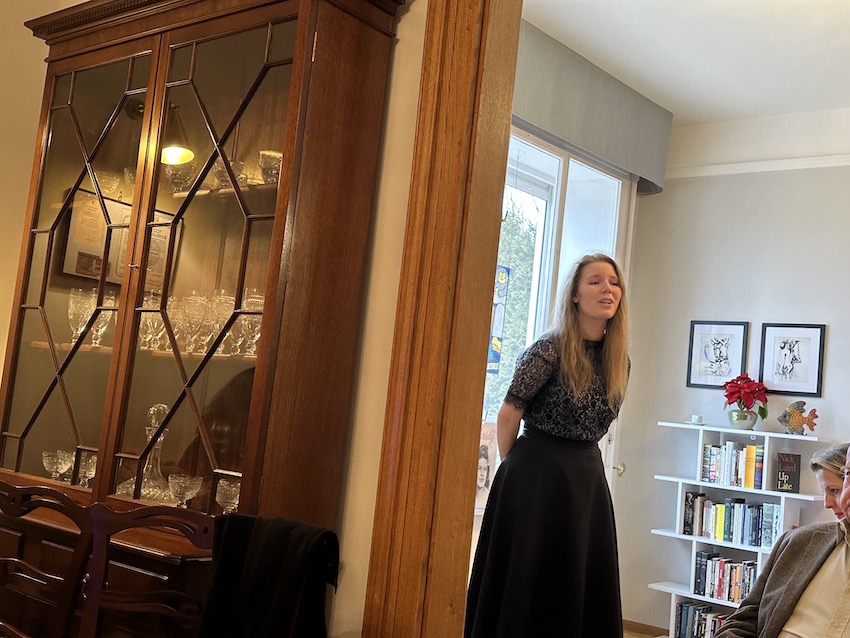
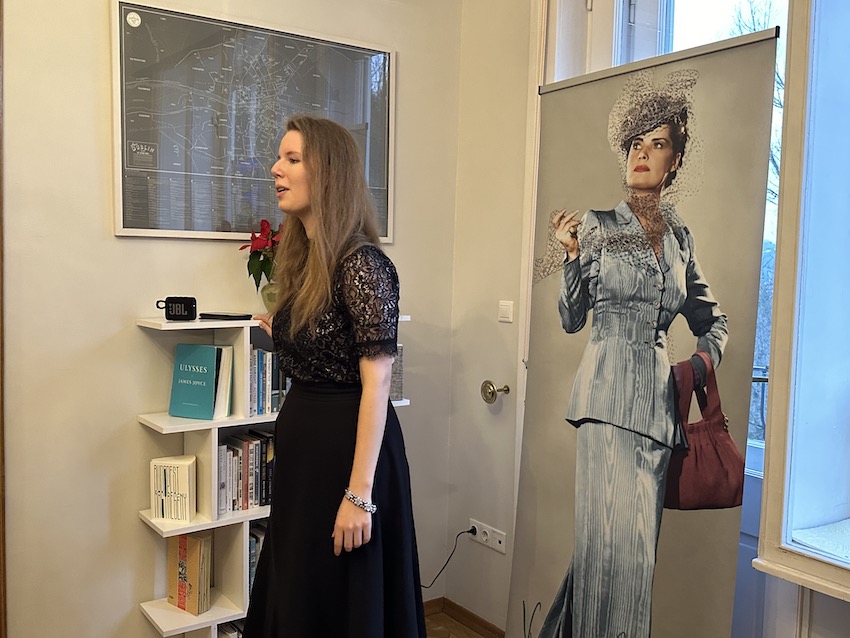
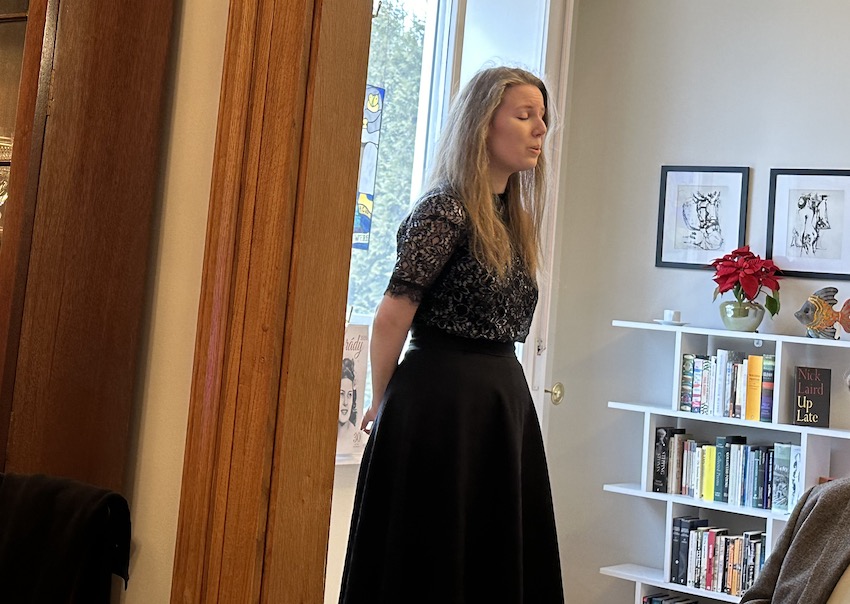
and followed by friendly exchanges among the attendees, reflecting on a poignant, meaningful message imparted by Katalin Karády:
“The one who forgets the years of darkness does not deserve the day that shines upon them today.”
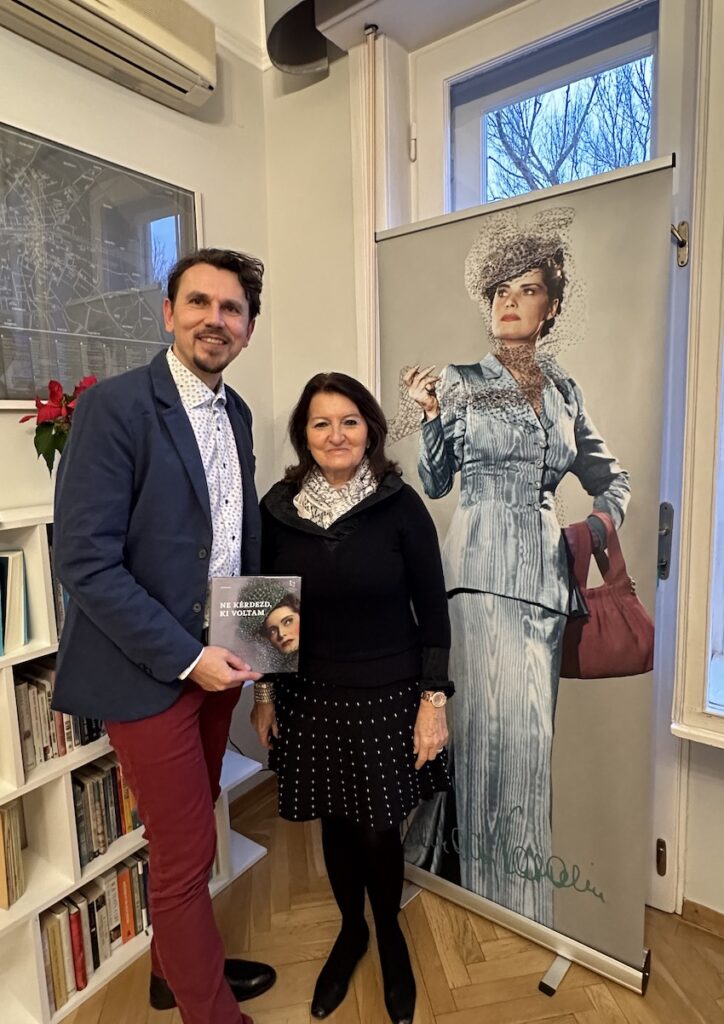
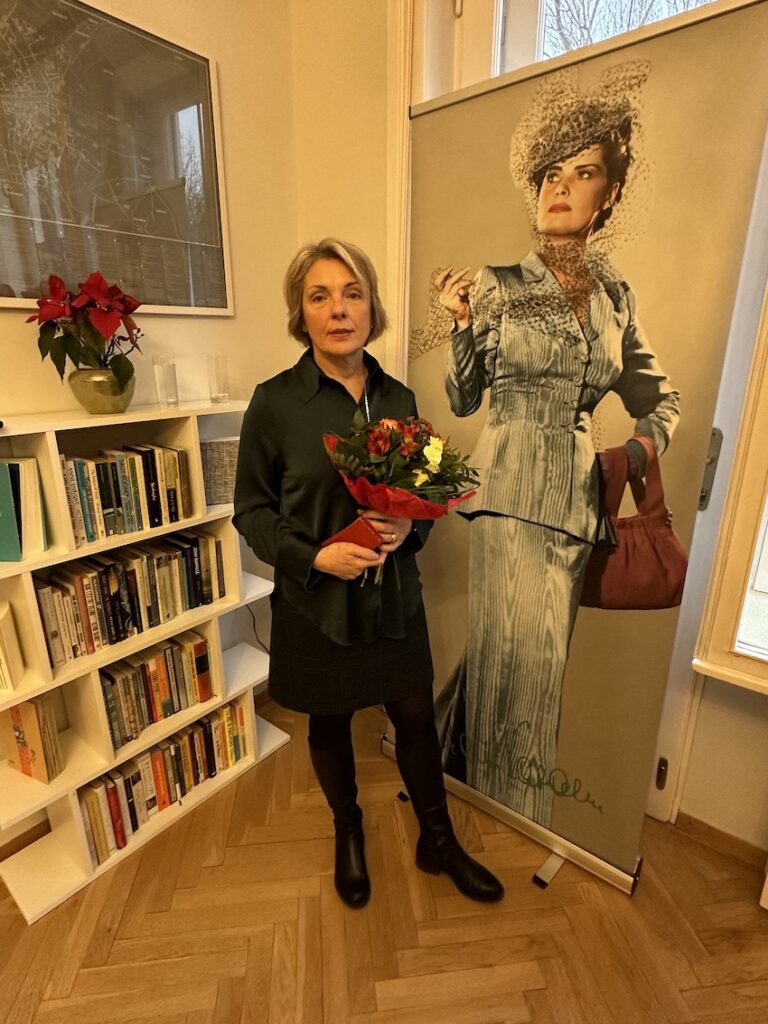
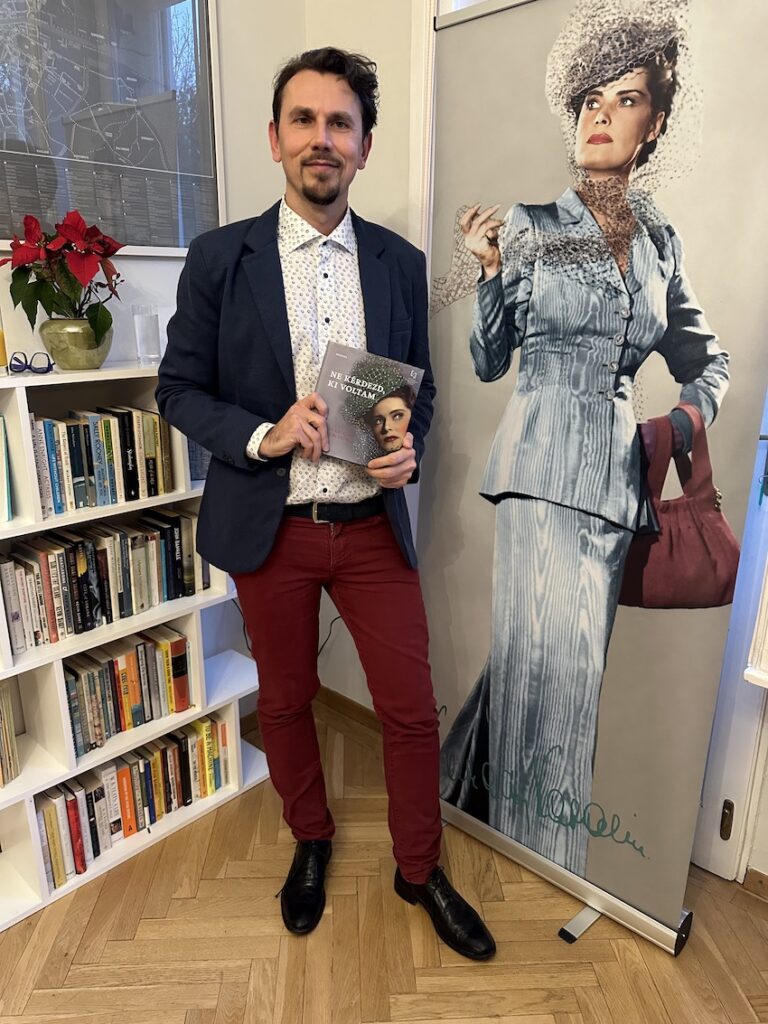
Source: Embassy of Ireland in Budapest
Photos by DPA












